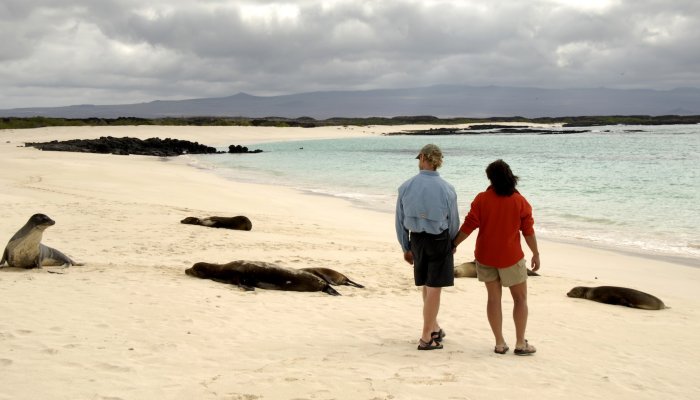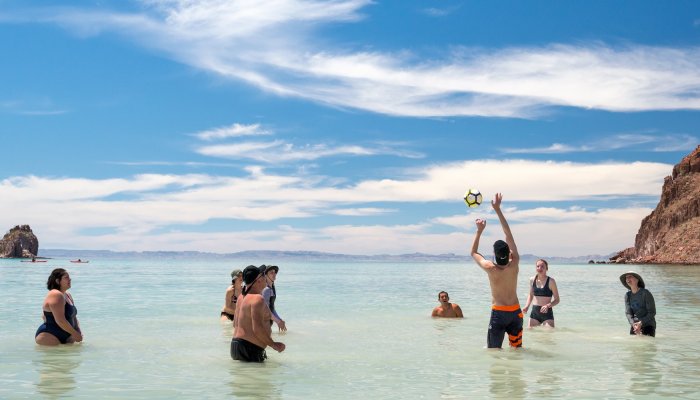Albanian Historical Periods
Albania has many travel draws but it's fascinating history is arguably one of the most intriguing facets of this stunning Country, and a top reason why many people choose to travel to Albania. We hope to have the opportunity to share Albania's rich history with you first hand on one of our Albanian adventures. Until then, may the following overview whet your appetite for a future Albanian trip!
Prehistory and the Illyrians
The first traces of human presence in Albania are from the Paleolithic era. Traces of human activity have been found near Tirana and in more remote villages such as Xarrë. It is thought that these tribes were closely connected with Proto-Greeks and may have even spoke the same language. Around 1600 BC some of these people left Albania to found the Mycenaean culture.
Illyrians and the Struggle for Independnce
Most of what we know of the Illyrians who lived in Albania comes from the Greeks. Several Illyrian kings united the tribes and fought the kingdom of Macedon, which became Macedonia. Bardyllis was the first of these Illyrian kings; his name means white star in Albanian. Cleitus, the last of these Illyrian kings, was ultimately defeated by Alexander the Great around 335 BC. In 230 BC the Illyrians, led by King Agron and his wife Teuta, regained their independence and became a formidable naval power in the Adriatic Sea. For about 60 years they fought and raided neighboring states, including the Romans, before finally being defeated by the Romans in 168 BC.
Under the Romans Illyria became Illyricum, an eastern province of the Roman Republic and later, the Roman Empire. The land known today as Albania was then split between three provinces: Illyricum, Macedonia, and Dalmatia. As the centuries passed, Christianity slowly began to replace the pagan religions of the area. During the schism that divided the Roman Empire into the Western and Eastern Roman Empire, Albania became a problem for the new emperors. Geographically speaking, Albania belonged to the Eastern Roman Empire. However, ecclesiastically, the region depended on the popes in Rome instead of the patriarchs in Constantinople.
Caught Between Roman Catholicisy and Eeastern Orthodoxy
The anomaly of Albania’s position changed during the Iconoclastic Controversy of 732 AD. Leo III the Byzantine Emperor banned the worship of religious images. Following this imperial decree, many religious images throughout the Byzantine Empire were destroyed. However, the archbishops of Albania sided with the Popes in Rome, who supported the use of icons in worship. After being criticized by Pope Gregory III, Leo III decided to confiscate several papal estates, including modern day Albania. The province of Illyricum remained under Byzantine control until the Great Schism of 1054, when the pope in Rome and the patriarch in Constantinople excommunicated each other, forming Roman Catholicism and Eastern Orthodoxy. Following the split southern Albania sided with the patriarchs, and retained their ties to Constantinople; meanwhile, the northern part of the region reverted back to Roman Catholicism. This split on religious lines marked the first fragmentation in the country along religious lines.
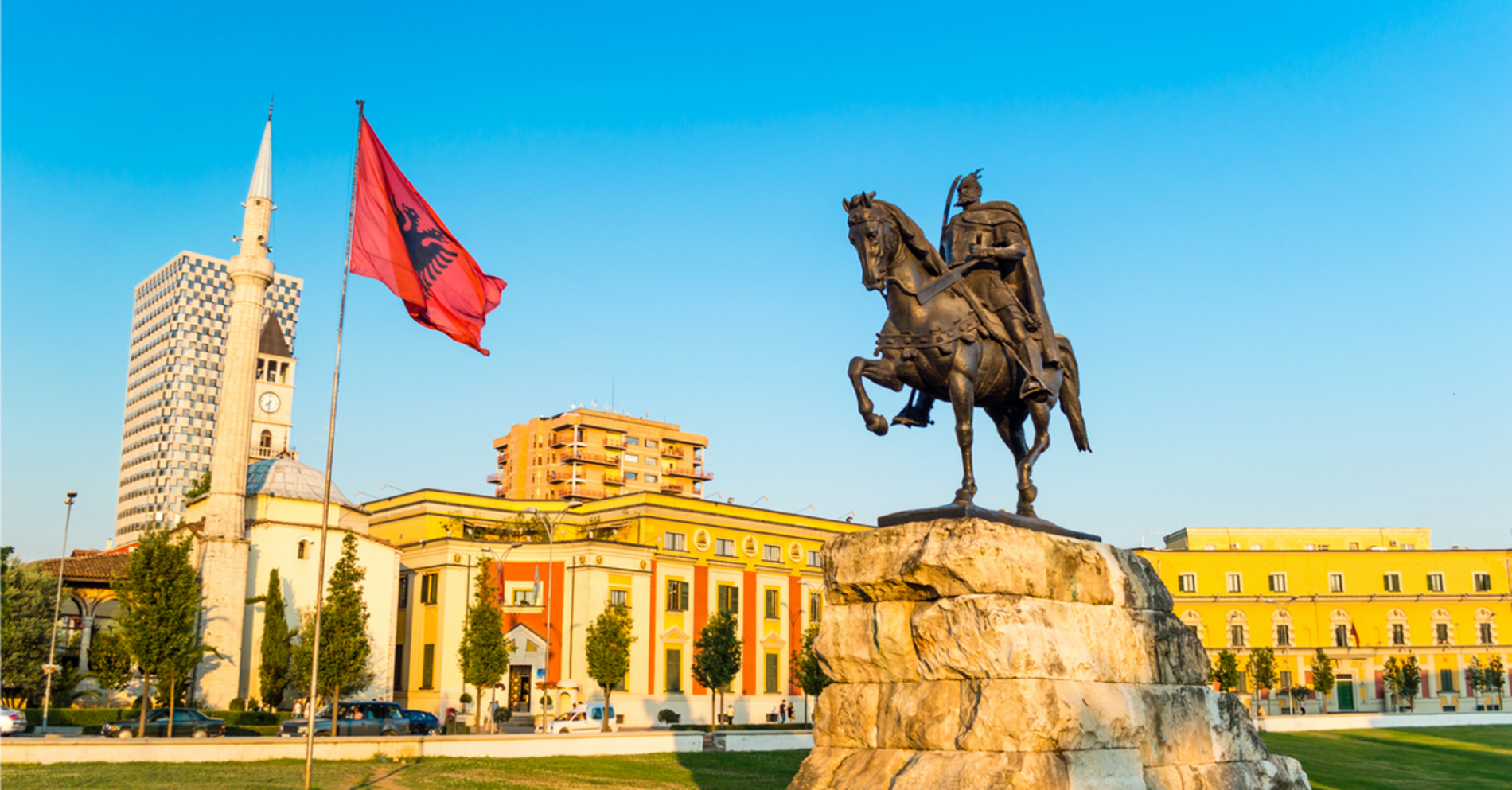
Byzantium and the Medieval Period
Goth invaders raided the lands that became Albania throughout the early Medieval period. Over the course of centuries these raids weakened the Byzantine hold on the land, and the province became susceptible to rebellions and secessions. Thus, the Medieval history of modern day Albania is complex, as different areas of the former Roman province reacted differently to the knotted political climate of the Middle Ages.
"Albania" Appears on the Map
In the ninth century, the eastern part of Albania came under the rule of the First Bulgarian Empire and remained so until the Bulgarians were reconquered by the Byzantines in the tenth century. Similarly, a different part of the country came under the rule of Charles of Anjou King of Sicily in 1258. Charles’s conquest of the region, and subsequent reorganization of it in 1272, led to the development of the Kingdom of Albania, the first recorded use of the word Albania. Though both regions were later reconquered and reincorporated into the Byzantine Empire, these different political entities demonstrate the difficulty the ancient Empire had in controlling the remotest areas of its domain.
As Byzantine influence over the region continued to weaken, most of modern day Albania came under control of the Serbian Empire. The Serbian Empire in the region dissolved over the course of a century into the Albanian principalities, a military alliance of feudal lords in the region. This military alliance arose around the time the Ottoman Empire was expanding into southeastern Europe.
Enter the Ottoman Empire
Under the leadership of George Kastrioti Skanderbeg, an Albanian national hero, the Albanians resisted the advance of the Ottomans for over 25 years. Backed financially by the kingdoms of Hungary, Naples, and Venice, Skanderbeg led the Albanians—routinely winning battle after battle against the better equipped and superior forces of the Ottoman Empire. He garnered renown throughout Europe and came to be seen as an example of the prototypical Christian ruler. Skanderbeg’s death, following prolonged illness with malaria, in 1468 at the age of 62 marked the end of significant Albanian resistance to the Ottoman Empire. Less than a decade later, after the Siege of Shkodra in 1478, modern Albania came completely under Ottoman rule. However, despite his failure to keep the Ottomans out of Albania, Skanderbeg’s efforts led to increased solidarity and national identity in Albania.
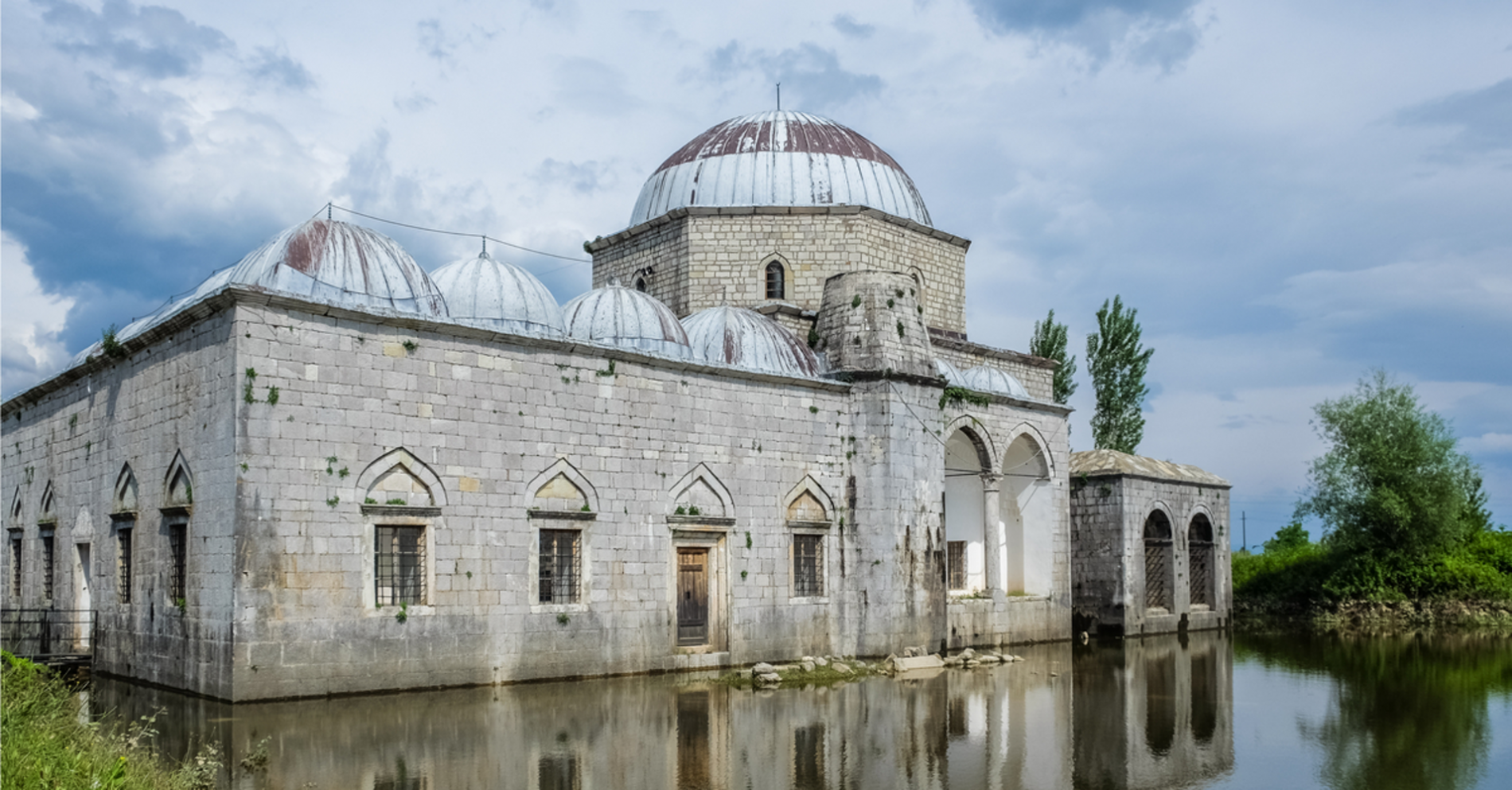
Ottoman Albania
Rise of Islam
Under Ottoman rule a number of cultural shifts began to take place in Albania. Among the most significant was the population's extensive conversion to Islam. The Ottomans incentivized this conversion by giving converts greater access to advancement in society. Additionally, non-Muslims paid higher taxes in the Ottoman Empire and the children of non-Muslims could be conscripted into the Janissaries, an elite corps of slaves noted for their discipline and inner cohesion. Therefore, conversion to Islam was very beneficial to native Albanians. By the seventeenth century most of the Tosks, Albanians native to the south and central parts of the country, had converted to Islam. In the northern, mountainous part of the country, however, it was nearly impossible for the Ottomans to enforce their laws. Here the Gegs, as they were known, often lived completely independent to Ottoman rule.
After converting to Islam, many wealthy Albanians relocated to the interior of the Ottoman Empire. Many of these Albanians and their children later became prominent members of Ottoman society. About fifty Grand Viziers were of Albanian origin. These leaders were famous in their time for fighting against corruption and even several military victories. Merzifonlu Kara Mustafa Pasha was a particularly well known Albanian Grand Vizier, notorious in Europe for his victories in southeastern Europe and expansion of the Ottoman Empire. However, after a humiliating defeat during the Battle of Vienna he was executed for his failures by Mehmed IV.
In the eighteenth century a mystical Islamic sect known as Bektashism became popular in Albania. The official faith of the Janissaries, Bektashism diverged greatly from normative Islam. Bektashis emphasized humanity as a reflection of the divine Allah. Furthermore, women participated equally in ceremonies and were permitted to remove their veils. Bektashis also ignored the Sharia’s ban on alcohol and made use of wine in celebrations. This sect grew in popularity throughout the Ottoman Empire, but especially in Albania and was a driving force behind rising nationalism among Albanians.
Albanian Factions Subvert Ottoman Empire
By the late eighteenth18th century two centers of power had arisen in Albania: one near Lake Shkodër in the northern, mountainous region of the country; the other near Ioánnina, near Greece. These power centers were ruled by the Bushati family and Ali Pasha. These two factions worked with and against the Sublime Porte, the Ottoman central government, at their pleasure.
The Bushati family worked with highland tribes to spark dissent in the remote regions of the country. They played foreign governments off each other as well to gain control of larger territory. However, they never directly challenged the Sublime Porte, instead working behind the scenes to weaken the Ottomans position in Albania and advance their own.
Ali Pasha of Ioánnina similarly developed a near independent nation in late 18th and early 19th century. To do so he allied himself with native Greek and Albanian ethnic and religious groups. Commanding one of the largest companies of Janissaries in Albania, Ali Pasha was able to rule based on expediency. Similar to the Bushati family, he was never completely loyal to the Ottoman Empire but fought with or undermined it for his own benefit. During his rule he developed Ioánnina into the center of a modern Greek enlightenment, with the city becoming a cultural, political and economic hub. Ioánnina became a destination for many expatriates of the time, the most famous being Lord Byron who visited Ali Pasha in 1809. Like modern scholars, Byron had mixed feelings about Ali Pasha, noting his wealth and appreciation for Greek culture, but also describing him as a tyrant who committed horrible atrocities.
Ultimately Ali Pasha grew too powerful for the Sublime Porte and needed to be reckoned with. Accused of grabbing power and influence away from the Sublime Porte, Ali Pasha was ordered to resign his post. Refusing, the popular tyrant resisted the Ottomans advance. He was ultimately defeated and killed at the Monastery of St Panteleimon, but such was his bravery in standing up to the Sublime Porte that even his enemies honored him in defeat.
Albanians Revolt Against the Ottomans
Ali Pasha served as an example of the corruption in the Ottoman Empire throughout the 18th and into the early 19th centuries. Ali Pasha’s success was largely due to the large army of Janissaries under his command and his ability to use them for his own advantage, not that of the Empire. Shortly after Ali Pasha’s death, the Sultan Mahmud II attempted to disband the once elite force. However, the Janissaries, unwilling to give up the power they had acquired over the last century, fought back.
Though the Janissaries were ultimately defeated, their destruction led to an increased resentment towards Ottoman rule in the Balkans, especially Albania. Balkan Christians and tribal groups were able to take advantage of the empire’s momentary weakness and many revolted. Throughout the 19th century rebellions in Albania increased religious and ethnic tensions. The Ottomans attempted to enact reforms, but these failed and only served to heighten resentment among the Albanians. Despite crushing revolts in 1844 and 1847, the Ottomans were unable to stem the tide of rising Albanian nationalism.
However, since there was not a long tradition of Albanian states in the region, the rise of nationalism among Albanians was slow and did not gain sustainable momentum until the 1870s. Following the Ottoman’s loss to the Russians and the subsequent Treaty of San Stefano, Albanians began to worry about Russia’s growing influence in the region.
League of Prizren Enters Political Scene
To counter Russian influence, ethnic Albanians in Constantinople organized a secret treaty between Albanian tribes in the north and representatives in the south. Under this treaty they formed the League of Prizren and were able to collect taxes and form an independent army. The Ottomans pressured the League to declare themselves Ottomans first and Albanians second. Despite officially aligning themselves with the Ottomans, the League of Prizren’s resistance to the Treaty of Berlin, which declared that there was no Albanian state and granted Albanian lands to other territories, forced the Ottomans to brutally destroy the League. With all of it’s leaders executed or exiled, the League failed to gain Albanian independence, though it did put Albanian interests on the world stage for perhaps the first time in centuries.
Following the collapse of the League of Prizren, Albanian political leaders struggled to instill a sense of Albanian pride in the people. One reason was the lack of geographic unity. The lands that would become Albania were at that time separated into four districts, each with its own regional governor. Furthermore, the religious divides present in the country forced the movement for Albanian independence to focus primarily on secular matters, alienating religious leaders in the separate regions. Even the Albanian language at the time lacked a written alphabet and any attempt to codify it led to political problems: whichever alphabet people used, either Latin, Cyrillic, or Arabic, betrayed significant political loyalties that already divided Albanians.
Rise of Albanian Nationalism and the Young Turks
However, despite these barriers to Albanian independence, the Ottoman Empire continued to fall on its own accord. National debt prohibited significant reformation of the army into a modern military power competitive with other European powers. Unable to control Balkan states with military might, the Ottomans resorted to arresting suspected nationalists. Towards the end of the century, the League of Prizren was reestablished, though this resurgence was short lived and met a similarly brutal end. Following the suppression of another rebellion, the Ottoman Empire attempted to outlaw the Albanian language. Albanian rebel groups joined those of other Balkan regions, such as Macedonia, Greece, Serbia, and Bulgaria, and created chaos for Ottoman officials in the Balkans.
In the early twentieth century political opposition groups emerged in the Ottoman Empire, the most prominent and influential one being the Young Turks. The Young Turks’ primary goal was to reestablish constitutional government in Constantinople. Following a widespread uprising in support of the Young Turks, Sultan Abdül Hamid II conceded to their demands. Since many Albanians had risen up in support of the Young Turks, the new constitutional government rescinded the ban on the Albanian language, allowing Albanian scholars to codify and develop an alphabet for their language. In 1908 a collection of scholars, in the spirit of the political climate of the time, chose the Latin alphabet as the standard script.
The new Latin standard displeased the new government in Constantinople, who was focused primarily on keeping the now crumbling empire together, and they continued to lobby for use of the Arabic alphabet as the standard script. The Young Turks also looked to control the rising Albanian nationalism and allowed strict punishment, such as public beating, for even minor crimes. The Young Turks controlled guns and made attempts to disarm entire regions while also denying the existence of an Albanian ethnicity.
Eventually, an uprising by mountain tribes in 1911, supported by Montenegro, turned into a widespread revolt. During this rebellion the Albanian flag was raised for the first time since Skanderbeg’s death more than four hundred years earlier. The success of this popular revolt led the Ottoman government no choice but to grant concessions to the Albanians, including the sanctioned use of the Latin alphabet as the script for the Albanian language. Another rebellion less than a year later would lead to the Ottoman Empire conceding to the formation of the first modern Albanian state.
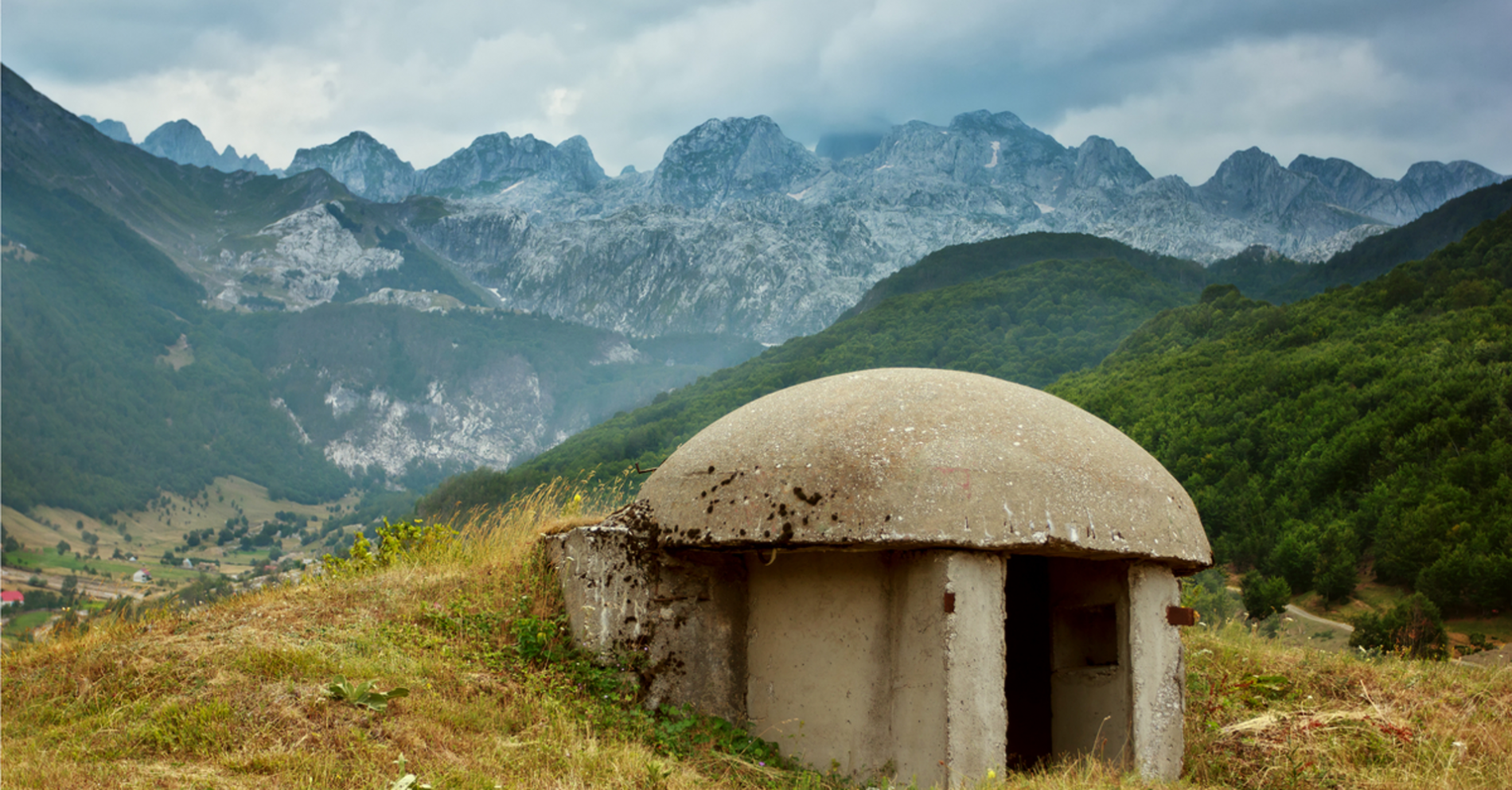
Two World Wars
First Balkan War Distrups Albanian Independence
Unfortunately, before the Ottomans’ settlement for the first Albanian state could be formalized, the First Balkan War began in 1912. Allies in the Balkans, including Bulgaria, Serbia, Montenegro, and Greece, invaded the heart of the empire all the way to Constantinople. Meanwhile, Montenegrins attempted to seize Albanian lands for their own. In November of 1912, in the midst of the war, Albanian Christian and Muslim leaders met to declare Albania a sovereign state. As the Albanians were declaring independence, Serbians, supported by Russia, were plotting to seize a port on the Adriatic Sea. Concerned that a Serbian port on the Adriatic would primarily serve Russian interests, Italy and Austria-Hungary supported Albanian autonomy and defense of their land.
In the summer of 1913, the Albanians sought the support of Europe’s Great Powers in recognizing their sovereignty and gained another important ally in the United Kingdom. With support from the Great Powers, the Treaty of Bucharest finally recognized Albania as a neutral constitutional monarchy. Montenegro was forced to cede territory in the north back to Albania, while the Serbians withdrew from northern Albania under threat from Germany, Austria-Hungary, and Italy. Though a victory for the new country, the treaty also left a bitter taste in the mouths of many Albanians, as they too were forced to cede territorial claims to predominately Albanian locales.
The Principality of Albania and World War I
The Principality of Albania was the first government established by independent Albania. Prince William of Wied, a nephew of the Queen of Romania, was selected by the Great Powers to be Albania’s constitutional monarch. While the Great Powers referred to him as “Prince” of Albania, most Albanians referred to their monarch as Mbret, or King, so as to not make him seem inferior to the King of Montenegro. However, the outbreak of World War I caused chaos in Albania and Prince William abandoned the country less than six months after arriving.
To restore order to Albania’s precarious autonomy, Albanians split along tribal and religious lines; some looked to the Ottoman Empire for a Muslim monarch, while others looked to various Great Powers in Europe. As the war continued the Triple Entente made a treaty with Italy that essentially gave the kingdom of Albania to Italy on the condition that Italy joined the war on the side of the Entente powers. By the war’s end, Italy occupied much of central and southern Albania, while the northern mountains were once again occupied by Serbia.
Albania Post-Paris Peace Conference
The political chaos in Albania continued in the years following the war. Nervous of losing territory and sovereignty, Albanians conceded to accept an Italian prince, as long as they would not be occupied by the Serbians. Nevertheless, the Paris Peace Conference of January 1920 agreed to partition Albanian territory between Yugoslavia, Greece, and Italy in the interests of avoiding territorial conflict between Yugoslavia and Italy. This agreement was made without the presence of an Albanian negotiator; the conference also lacked a delegate from the United States.
Albanians of course rejected the agreement to partition their country and in January of the same year issued a statement warning that Albanians were prepared to use force to defend Albania’s national integrity. A bicameral parliament was likewise created and moved the government from Lushnjë to Tirana, which became the seat of Albania’s central government.
In March of 1920, Woodrow Wilson blocked the Paris agreement, while at the same time accepting an official Albanian ambassador to Washington DC. However, Rome continued to occupy much of Albania. The Albanian government encouraged peasants to harass Italian troops. Albanian forces fought off the Italians after the Battle of Vlorë. In December of the same year, Albania was recognized as an official member of the League of Nations, though its territorial claims remained in dispute and Italy continued to occupy an island off the coast of Albania in the Vlorë Bay.
Yugoslavia did not give up as easily as Italy. They continued a hawkish foreign policy towards Albania, even supporting the creation of the Republic of Mirdita, a renegade government established by a disgruntled Albanian chieftain. Eventually, Yugoslavia invaded Albania beyond the area they had occupied since the end of the war, forcing the hand of the League of Nations. The League sent a commission of delegates to Belgrade, reaffirming the Albanian borders from 1913.
Volatile Self-Government
Finally achieving these cohesive geographical borders did not solve all of Albania’s problems. The political situation was still highly unstable and volatile. Between July and December of 1921 the government changed hands five times. In December of 1921, Xhafer Ypi, head of the Popular Party, formed a government, appointing Fan Noli as foreign minister and Ahmed Zogu as Minister of Internal Affairs. Noli soon after resigned, once it became clear the Zogu was repressing the rights of his opponents, including the right to bear arms—a traditional Albanian right.
In early 1922 Noli took over the premiership of Albania and quickly turned his back on the Popular Party. He married the leader of his oppositional Progressive Party and installed political protégées into positions of power. Noli then founded a new party, the Opposition Party of Democrats, which was formed of conservative Muslims, Western-oriented industrialists, and people overlooked by Zogu’s political machine. Though Zogu won the1924 election handily, he eventually stepped aside in the wake of an assassination attempt. In June of 1924, a peasant revolt drove out Zogu and elected Noli as Prime Minister. Zogu and his allies subsequently fled to Yugoslavia.
Noli had visions of a Western style democracy: he called for dismantling feudalism, ratifying a constitution, improving local governments, helping peasants, and improving national health and transportation. Unfortunately, Zogu had hired an army of mercenaries in Belgrade and returned, ousting Noli and abolishing the Principality of Albania. He then created the Kingdom of Albania under Zog I, Zogu’s new name.
The Kingdom of Albania and Zog I
Zog I was unpopular among the Albanians. More assassination attempts followed his seizure of power, including one on a trip to Vienna. His government was backed by Italy, which made him unpopular among Italians as well, who considered him a drain on their country’s resources. In 1929, during the financial crisis, Italy loaned Zog I 100 million francs. When Albania could not pay the interest on the loan, Italy attempted to enforce strict regulations on Albania, which Zog ignored.
Despite his unpopularity, Zog I accomplished much during his eleven-year reign, arguably transforming Albania from a feudal state to a modern country. He emphasized primary education and opened many schools for the population. He modernized the agricultural industry, increasing production throughout his reign though economic conditions remained poor. He also attempted to improve Albania’s infrastructure, investing money loaned from Italy into a national highway system. Further, Zog I abolished Sharia law, instead establishing a civic code based on that of Switzerland, while also accepting Jewish refugees fleeing from other parts of Europe.
Nazis and Italians Look to Albania
The reign of Zog I of Albania was to be short lived, however. Following Germany’s annexation of Austria and subsequent move towards Czechoslovakia in 1939, Italy set its sights on Albania. In March of 1939, Mussolini attempted to buy off King Zog, an offer which Zog refused. The next month the Italians invaded Albania and installed Victor Emmanuel III as King of Albania. With Hitler’s continued expansion in Europe, the jealous Mussolini used Albania as a springboard into Greece. However, his invasion proved unsuccessful until Germany intervened in 1941. Their success in Greece united the entire Balkan Peninsula under the Fascist Party’s banner.
After Italy’s surrender to Allied forces in 1943, the Germans occupied Albania. Nazis dropped paratroopers into Tirana before Albanian nationalists could seize control themselves. The proxy Nazi government did not exert direct control over the Albanians, but instead maintained popularity by espousing policies popular among Albanians. They annexed Kosovo and persecuted resident Serbs.
But the proxy government could not last while the Nazis were falling elsewhere in Europe. In 1944 a communist partisan group formed under the leadership of Enver Hoxha. Other resistance groups formed in the mountains, mostly royalist groups. Eventually the communists under Hoxha’s leadership ousted the Germans from Tirana after a 20-day battle in November of 1944. They also liberated Kosovo and parts of Montenegro, Bosnia and Herzegovina. Under Hoxha, the communists moved quickly to eliminate all political enemies and secure their hold over Albania.
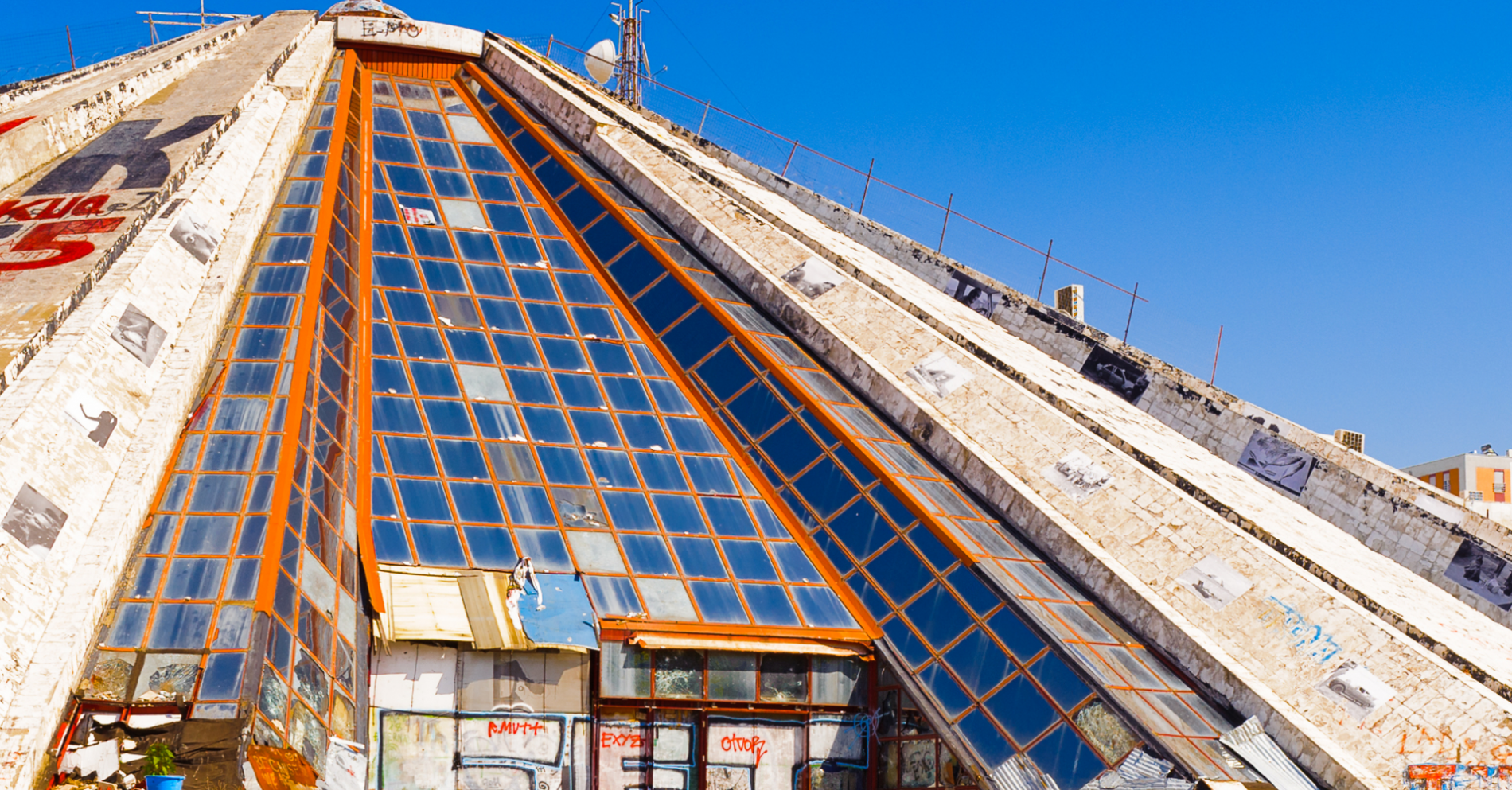
Albania 1945-Present
Hoxha and the Communist State
By early 1945 Hoxha had driven out or exiled most of the interwar elite, including Zog I. Hoxha’s internal affairs minister presided over the trials of hundreds of Albanians who were executed for “war crimes"; mostly, however, these were politicians, clan chiefs, or former members of government who were opposed to the communist state. Many of these people had family members executed, exiled, or sentenced to work in prison camps for the rest of their lives.
The communist regime’s consolidation of power similarly led to a shift in political clout. For centuries the Ghegs, tribal groups in the northern mountains, had held the most power among ethnic Albanians. However, with the death of many of their chieftains and a shift towards a more industrialized economy, the Ghegs lost much of their power, while the Tosks in the south became the more powerful ethnic group.
In December of 1945 elections were held for the new People’s Assembly. Only members of the Democratic Front, a movement organized by Albania’s Party of Labour, appeared on ballots, as the communists used scare tactics and propaganda to keep others off the ballots. Official data showed that 92% of the electorate voted and that 93% of voters voted for the Democratic Front ticket. When the People’s Assembly convened a month later in 1946, it annulled the monarchy, transforming Albania into a people’s republic.
Communist Ties in the New World
Hoxha and his ally Mehmet Shehu, a military commander of the resistance in WWII, reshaped Albania according the principles of Stalinism. Political executions remained common, with estimates ranging from 5,000-25,000 total killed between 1945 and 1989. Under Hoxha, Albania remained allies with the Soviet Union and was highly dependent on Soviet aid. When Stalin died in 1953, neither of Albania’s leaders travelled to Moscow for his funeral, fearing rivals within the Party of Labour would plot a takeover in their absence.
When the Soviets began the process of de-Salinization and transitioned to collective leadership, they urged the Albanians to follow suit. However, Hoxha and Shehu transitioned to collective leadership only nominally. By 1956 Albania had completely cut ties with the Soviet Union due to the leadership’s fears that the Soviets preferred Yugoslavia.
In the following years, during the Sino-Soviet split, the Albanians sided with China, who assumed the Soviet’s former role of providing billions of dollars in financial aid to the Albanian regime. However, China cut off all foreign aid to Albania in 1978 after Hoxha’s criticism of China’s policies following Mao Zedong’s death.
Dissolution of the One Party State
In the 1980s, after ruling Albania for nearly four decades, Hoxha’s health began to deteriorate, prompting his search for a successor. Overlooking his longtime ally, Shehu, Hoxha appointed Ramiz Alia to the position. Shehu refused Hoxha’s offer to resign quietly. In November of 1981, Shehu was found dead in his bathroom. Following his death Hoxha purged Shehu’s family and declared that Shehu had been a spy for Yugoslavia, the CIA, MI6, and the KGB who had been plotting the death of Hoxha. The official cause of death remains suicide.
Hoxha died in 1985. Alia attempted to rule in his place for a time. However, changes in Soviet policy, economic stagnation, and policies of liberalization led to the dissolution of the one party state. Though many citizens remained unaware of events outside Albania, such as the fall of the Berlin Wall in 1989, liberal policies continued to bring change to the remote nation.
In 1991 the first pluralist elections took place since before World War II. Thought Alia’s party remained in power, the change to a democratic system of government was clear. This change finally came in 1998 with the ratification of a new Albanian constitution that guaranteed the protection of human rights and a democratic system of government. Since then Albania’s democracy has continued to strengthen and grow.


